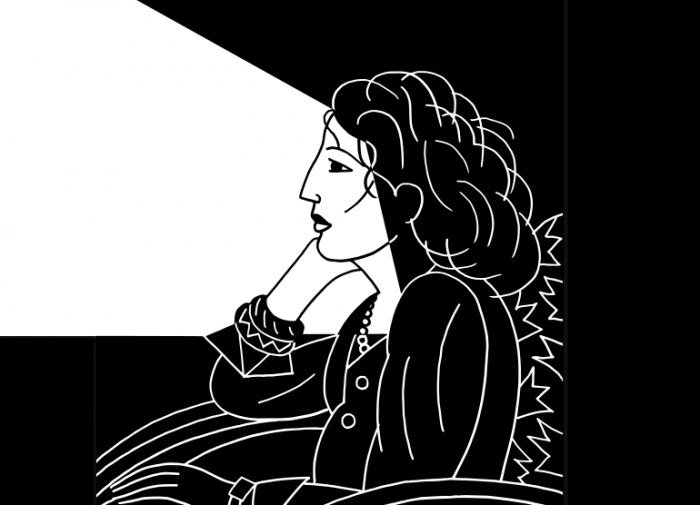When was the last time you used an app or product that was so seamless, it felt as though it was a natural extension of your human experience?
Alternatively, when was the last time you used an app or a product that was so frustrating to use, your natural response was to throw the device across the room?
As industrial designer Dieter Rams once said, “indifference towards people and the reality in which they live is actually the one and only cardinal sin in design.”
With his “less, but better” design philosophy, Dieter Rams has touched the lives of millions—if not billions—of people since he started his career as an industrial designer at Braun in 1955.
Although formally trained as an architect at the Wiesbaden School of Art during the 1940s, Rams ended up at the German electronics company by chance. A friend suggested he respond to a job posting for an interior designer—a position that was to focus specifically on modernizing the interior of the company’s headquarters.
Leveraging his background in both architecture and modern design, Rams applied for and got the job after interviewing directly with company owners Erwin and Artur Braun.
In less than a year, the 23-year-old shot up the design ranks at the company and became heavily involved in the consumer electronic design division, where he would regularly pitch ideas at meetings.

In 1956, his suggestion to add a clear perspex lid to the now-iconic Braun SK4 Phonogram made it into the final design and, as a result, helped catapult the young designer to the top of the Braun design team where he landed as the Head of Design in 1961.
Over the next three decades, Rams held this position and helped shape some of the most influential and groundbreaking product designs that the world has ever seen—most of which are based on his “functionalism” approach to designing objects that put function before form. In other words, the aesthetic of a product was driven by its purpose and interface rather than unnecessary decoration or use of excessive materials.
To this day, most of Rams’ products designed under this weniger aber besser—“less, but better”—approach live in design museums and in the homes of collectors around the world as icons of modern 20th century industrial design.
Unsurprisingly, Ram’s approach to design has been the source of inspiration for many, but few have had as much of an impact on the world as Jony Ive, Apple’s Chief Design Officer.
“When I was a young boy growing up in London, my parents bought a wonderful juicer,” wrote Jony Ive in the introduction to the book Dieter Rams: As Little Design As Possible. “It was a Braun MPZ 2 Citromatic. I knew nothing about Dieter Rams. But to a little boy uninterested in juicing, I remember the Citromatic he and his team designed for Braun with shocking clarity. It was white. It felt cold and heavy. The surfaces were without apology, bold, pure, perfectly-proportioned, coherent and effortless. There was an honest connection between its blemish-free surfaces and the materials from which they were made. It was clearly made from the best materials, not the cheapest. No part appeared to be either hidden or celebrated, just perfectly considered and completely appropriate in the hierarchy of the product’s details and features.”
It was from this unique ability to see the world through the lens of functional design that Rams began to grow increasingly concerned by the state of design around him in the late 1970s—a time of chaos in design that he referred to as “an impenetrable confusion of forms, colors and noises.” As a hyper-aware designer worried about how he might be contributing to this “impenetrable confusion”, Rams naturally asked himself, “is my design good design?”
“You cannot understand good design if you do not understand people; design is made for people,” said Rams during a speech in 1976. “It must be ergonomically correct, meaning it must harmonize with a human being’s strengths, dimensions, senses and understanding.”
The result of this period of self-reflection are ten timeless design principles that Rams considers to be the holistic foundation for defining any design as “good design”. Although rooted in physical product design—particularly sustainability—these universal design principles are just as relevant for today’s digital experiences as we continue to be bombarded with “an impenetrable confusion of forms, colors and noises” in the digital product landscape.
Ultimately, as our digital experiences become ever more portable and increasingly more immersive, designers will need to be as sensitive as ever.
By further understanding and applying these ten principles to digital products, today’s UI and UX designers can ensure that they’re putting good design out into the world, rather than unwittingly adding to the noise:
“I think that good designers must always be avant-gardists, always one step ahead of the times,” said Rams in a speech to the Braun supervisory board in 1980. “They should–and must–question everything generally thought to be obvious. They must have an intuition for people’s changing attitudes. For the reality in which they live, for their dreams, their desires, their worries, their needs, their living habits. They must also be able to assess realistically the opportunities and bounds of technology.”

With technology and digital experiences advancing faster than ever, today’s digital product designers should be hypervigilant when it comes to understanding the role of design and technology in the human experience.
But perhaps most importantly, today’s designers should understand that organizing chaos in their projects—while difficult—is not impossible. As Rams himself once said, “good design is a reality!”
And in the case of Rams and the ten principles, good design is as little design as possible.
Read more about UX design and visual narratives.
Images and Ten Principles copy via Vitsoe.
 hbspt.cta.load(403603, ’90c77495-f7ed-4bd6-a47f-0e033381ac7b’);
hbspt.cta.load(403603, ’90c77495-f7ed-4bd6-a47f-0e033381ac7b’);


